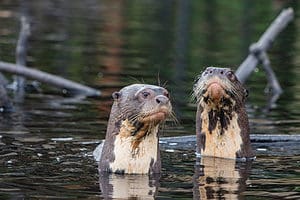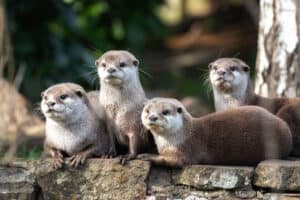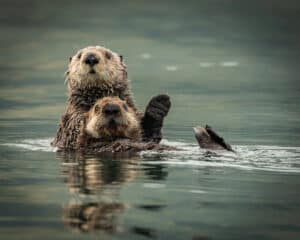Have you ever wondered what a group of otters is called? While otters are undoubtedly adorable, they are also fascinating creatures with unique behaviors and characteristics.
Otters are aquatic, semi-aquatic, or marine mammals in the weasel family. They are popular for their playful nature in various habitats worldwide. However, despite their widespread popularity, many people must be aware of the different collective nouns you can use to describe a group of otters. These collective nouns include a bevy of otters, a raft of otters, and a romp of otters.
Learning about the different names given to animal groups can be fun and educational. In this article, we will explore the answer to the question “What is a group of otters called?” and delve into some interesting facts about these fascinating creatures. So, let’s dive in and discover the intriguing world of otters!
Types of Otter Species
Otters belong to the family Mustelidae, including weasels, ferrets, wolverines, and badgers. There are 13 extant otter species, and they get found across all continents except Australia and Antarctica.
The 13 otter species can further be classified into two categories: the riverine otters (such as the North American river otter and giant otters) and the sea otters (such as the Southern sea otter and Asian small-clawed otter), each with unique social structures and group behaviors.
Each species has distinctive features, such as webbed feet for swimming, an outer layer of fur that repels water, and a layer of air trapped between their skin and fur that helps them stay buoyant and warm in cold water.
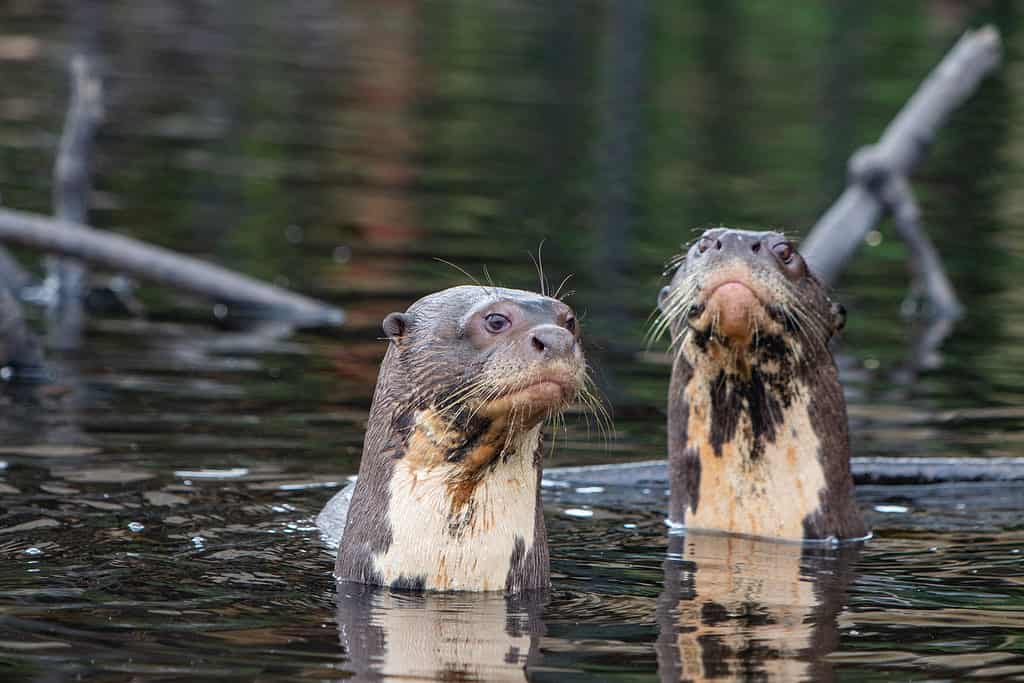
There are two types of otters — riverine otters and sea otters.
©Johnny Giese/Shutterstock.com
Do Otters Live in Groups?
Otters are charming creatures known for their distinctive scent and features. Generally, otters tend to be social creatures and thrive in groups, known as a family of otters. Within these families, otters interact extensively with each other and engage in playful behaviors, such as sliding down muddy banks, chasing each other, and sometimes wrestling. They also work together to hunt for food, share resources, and look after their young.
Despite the social nature of otters, not all species live in groups. The Eurasian otters, for instance, are solitary creatures who stake out a territory for themselves, mainly due to other Eurasian otters within their range. In some cases, otters that spend most of their time on land tend to be solitary animals, while those living in aquatic environments are more likely to form groups.
Otter Social Structure
Otters are social creatures that thrive in groups, known as a bevy or family. Therefore, their social structure is an essential aspect of their behavior and interactions with one another.
A typical otter family group consists of a mating pair and their offspring. A male otter is a boar or dog, while a female otter is a sow or bitch, and their offspring cubs or pups.
The mother otter is mainly responsible for caring for the otter pups, from nursing to teaching them how to swim and hunt. Meanwhile, the father otter helps by providing food for the family and protecting them from potential predators.
Interestingly, a few otters from previous litters may sometimes remain with the family group, forming a larger bevy. This extended family structure is beneficial for all members. For one, it helps to ensure better protection and survival of the otter pups as there are more adults to care for them. Secondly, having more otters in the bevy means more players cooperate in hunting and gathering food resources.
Overall, the social structure of otters centers around family groups, where each member has a specific role to play in the survival and livelihood of the group. The sociable bonding and sense of community that otters develop amongst their family members make them fascinating creatures to observe in the wild.
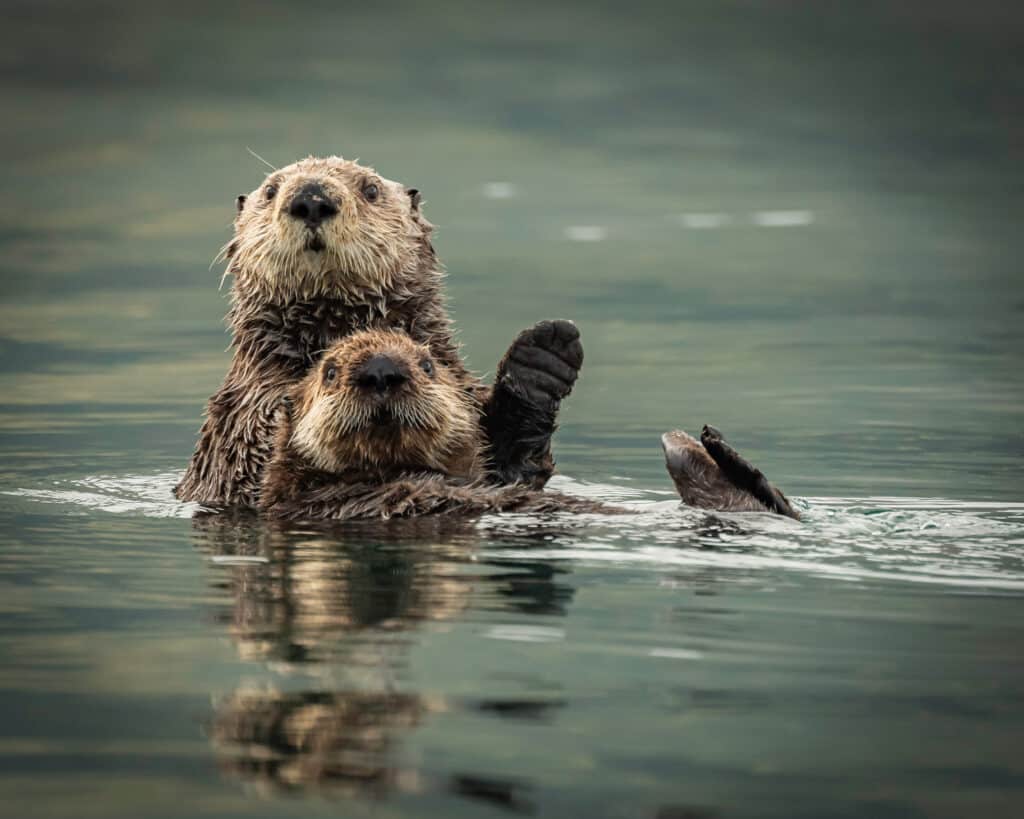
Otters are playful creatures with many social behaviors that you can enjoy viewing.
©Laura Hedien/Shutterstock.com
Collective Nouns for Otters
Collective nouns have been an essential part of the English language for centuries. They are words used to describe a group of things or animals, and otters are no exception. While some may think of otters as solitary animals, they are actually social creatures that often live in groups and have several collective nouns to describe them.
Therefore, you can call a group of otters one of the following collective nouns:
- Bevy of otters
- Raft of otters
- Romp of otters
For many years, these collective nouns for otters have become an essential part of scientific studies. In addition, they help us better understand otters’ behavior and social structure, making it easier for researchers and enthusiasts to communicate about these animals.
Let’s look at each collective noun for otters individually so you know when to use them in various situations.
Bevy of Otters
The term “bevy of otters” is a unique collective noun you will use to describe a group of otters. It specifically refers to a large group of these mammals, often characterized by their playful nature and social behavior.
People use the term “bevy of otters” in various situations, such as observing otters in their natural habitat, scientific studies and research, and casual conversations.
You call both river and sea otters “bevy” when you observe them in large groups. This is because these animals are typically exceptionally social and often form groups for hunting, playing, or traveling together.
In a bevy of otters, the social behavior of these animals is on full display. Otters are famous for their playful nature, and you can see them frolicking, playing, and engaging in various water-based activities in their groups. Additionally, they may work together to hunt for food, which could include a variety of fish and other small aquatic animals.
It is challenging to pinpoint exactly how many otters typically make up a bevy, as it can vary depending on the species and the specific environmental conditions. However, it’s common for a bevy of otters to consist of several dozen individuals.
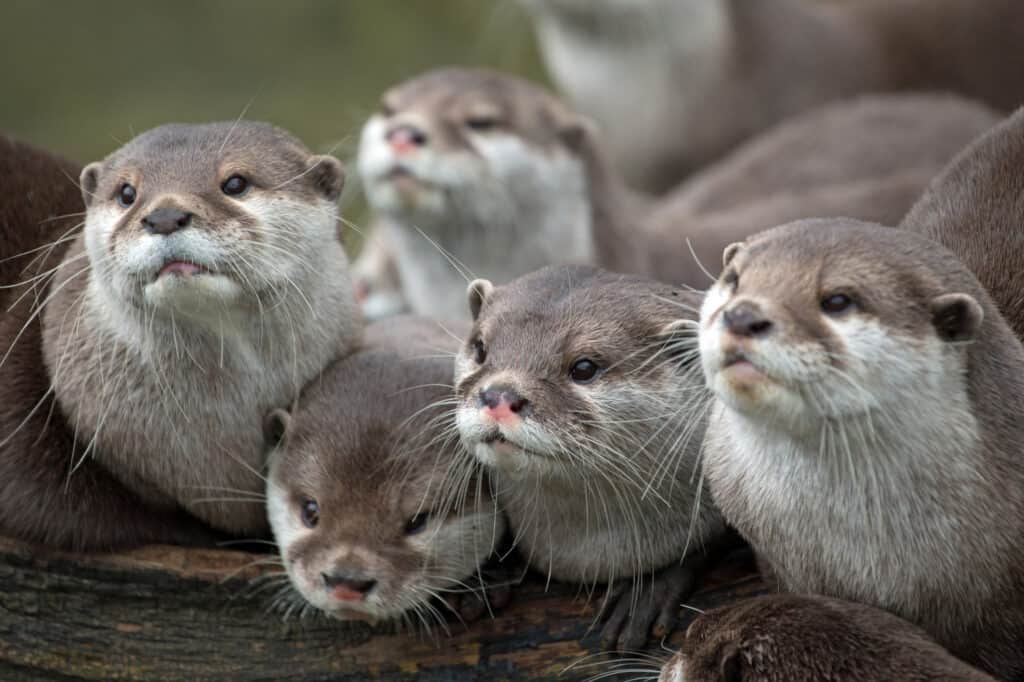
Otters thrive in groups and work together in various ways, including hunting, playing, and sharing resources.
©L-N/Shutterstock.com
Raft of Otters
A “raft of otters” refers to a group of otters lounging around or resting together on the water’s surface, forming a large, floating island of fur.
You will use this term when observing sea otters, as they are the species you most commonly see floating together in large rafts. However, it’s important to note that a raft of otters differs from other collective nouns for otters in that it explicitly emphasizes the animals’ behavior and their physical arrangement rather than their specific activities or relationships.
Sea otters are the most common species, and you will refer to them as a raft. Otters generally lay on their backs or stomachs when in a raft, holding hands to stay together and conserve heat. You may also find sea otters wrapping themselves in seaweed to connect to each other in a raft, making it easier for them to stay together and connected.
The size of a raft can vary greatly, ranging from just a few otters to dozens or even over a hundred to thousands of individuals in the case of sea otters.
Romp of Otters
A “romp of otters” is a group of otters playing or frolicking together. The term “romp” is often used to describe playful and energetic behavior, perfectly encapsulating otters’ lively and active nature. You use this collective noun when observing river otters chasing each other in the water or sliding down muddy banks. A romp of otters is also used to describe a group of otters playing with objects such as shells or pebbles or even chasing after a school of fish. The term generally describes any situation where otters are actively engaged in play.
The photo featured at the top of this post is © o0swfh0o/Shutterstock.com
Thank you for reading! Have some feedback for us? Contact the AZ Animals editorial team.



